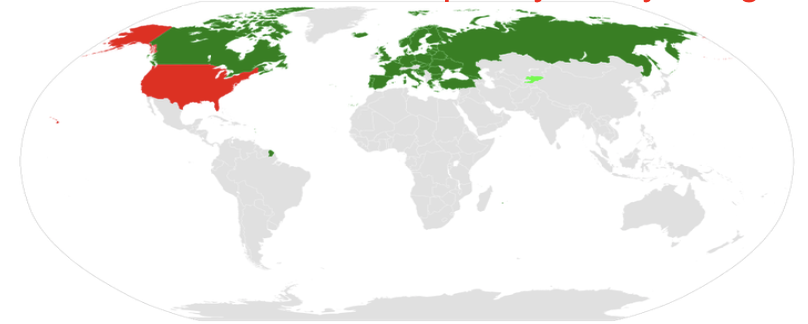Russia too submits legislation on withdrawal from the treaty
Washington DC, May 31: The United States announced on May 27th, 2021, that it will not rejoin the Open Skies arms control pact. The treaty permits nations to carry out unarmed surveillance flights over the entire territory of the member nation. The United States left the treaty in November 2020 citing violation of terms by Russia. Russia denied the allegations.
In January 2021, Russia too announced its plans to leave the pact. On May11th, Russian President Vladimir Putin submitted a legislation in the Parliament to formalize its departure. The legislation will come into effect after it is passed by the Upper House of the Parliament and is signed by the President. Russia stated that the remaining members of the treaty failed to provide confidence to Russia that the data acquired from the Russian skies by the member nations will not be shared with the US.

Image Credit: JayCoop
Once member nations of the treaty are notified, any country can officially withdraw from the pact in six months’ time – as per the agreement.
Reasons for Russia’s Departure:
In November, Russia asked for a written guarantee from the remaining member states to not share surveillance data with the US. Russia has so far not received any written guarantee.
History of the Open Skies Treaty
In 1955, US President Dwight Eisenhower suggested the idea of a treaty which would allow military transparency between nations, thereby reducing the risk of war. It suggested the use of unarmed surveillance aircraft. Before satellites, planes or helicopters were the only means to provide intelligence and confidence-building information. However, the Soviet Union rejected the idea, believing it to be an espionage and more beneficial to the US. In 1989, US President George H. W. Bush revived the proposal, encouraging an Open Skies Regime. By this time, the US and Soviet Union has started collecting intelligence through satellites and remote sensors. With time more nations expressed interest to join the treaty to prevent future wars and promote confidence among nations. The Open Skies treaty came into force on Jan 1, 1990. A total of 34 members are party to the treaty with one non-ratified nation (Kyrgyzstan).
Main rules of the treaty:
- All members are obligated to accept a certain number of flights per year.
- All of the member nations territory can be over flown. No territory is off limit.
- Countries wishing to survey a certain member territory must inform the host 72 hours prior andshare the aircraft route 24 hours prior.
- The aircrafts have to be fitted with 4 types of sensors optical panoramic camera, video camera,infrared-line scanning device, and synthetic aperture radar. The data has to be shared with the host country.
Unarmed Surveillance Aircraft – Airplanes used only to survey and do not contain any weapons.
Non-Ratified – Unofficial. Not signing the treaty but being part of it.
Remote Sensors – Sensors which help gain information about an object without physical contact.
Espionage – Spying.

Image Credit: Garterfreunden

